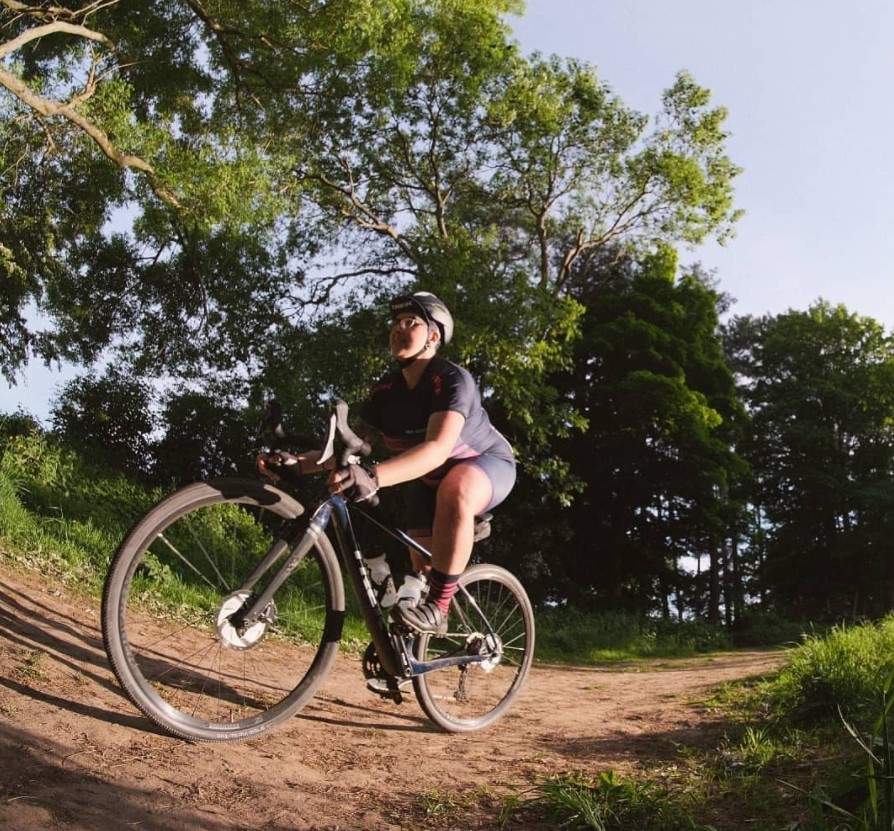Best electric bikes 2025: Assisted bikes for road, gravel, commuting and more
Our pick of the best electric bikes from all disciplines of pedal-assisted cycling
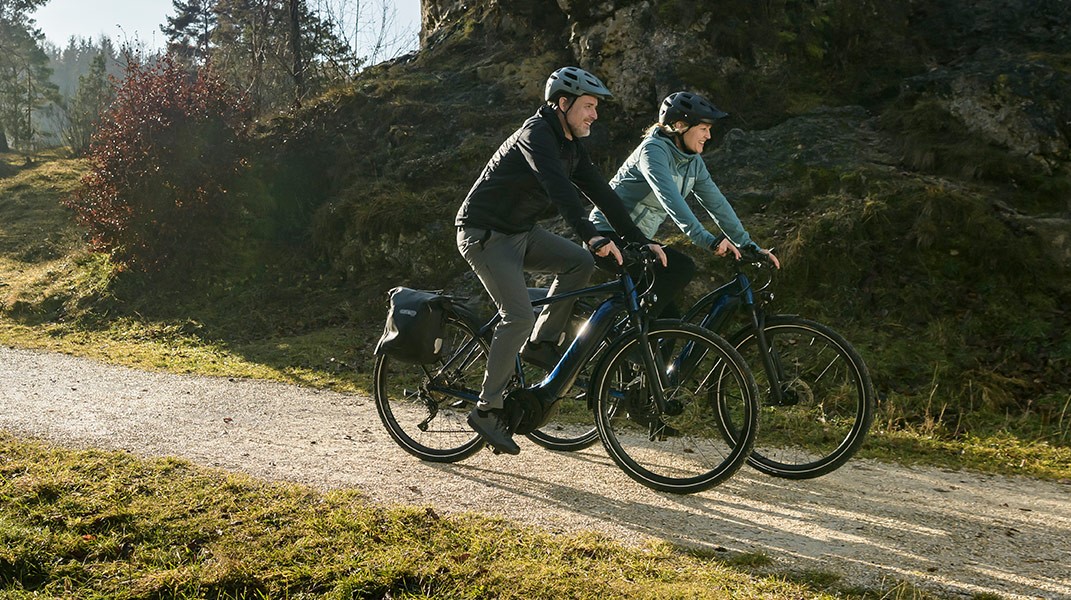
- Quick list
- Best electric road bikes
- ▶ Best for on/off road use
- ▶ Best fast road e-bike
- ▶ Best lightweight e-bike
- Best electric gravel bikes
- ▶ Best affordable gravel e-bike
- ▶ Best electric gravel bike
- Best budget e-bikes
- ▶ Best budget folder
- ▶ Best US budget e-bike
- ▶ Best US fast commuter
- Best electric commuter bikes
- ▶ Best low weight commuter
- ▶ Most versatile commuter
- ▶ Best folding e-bike
- How to choose the best electric bike for you
- FAQs
- How we test the best electric bikes
The best electric bikes cover a wide range of styles and prices. Here, we've rounded up our picks of the best electric bikes in different categories, but we have more options for each in our individual electric bike guides.
If you're looking for an electric bike for recreational use, you could consider the wide range of electric road bikes available as well as the best lightweight electric bikes, which can weigh a little more than a normal drop bar race bike.
On the other hand, if you're not looking to spend too much, we've found a wider selection of the best budget electric bikes, which, along with folding electric bikes, are among the best electric bikes for commuting.
You'll find our picks of the best electric bikes by e-bike type below. Alternatively, head to the bottom of the page for our buyer's guide on how to choose the best electric bike for your needs.
Best electric bikes: Quick list
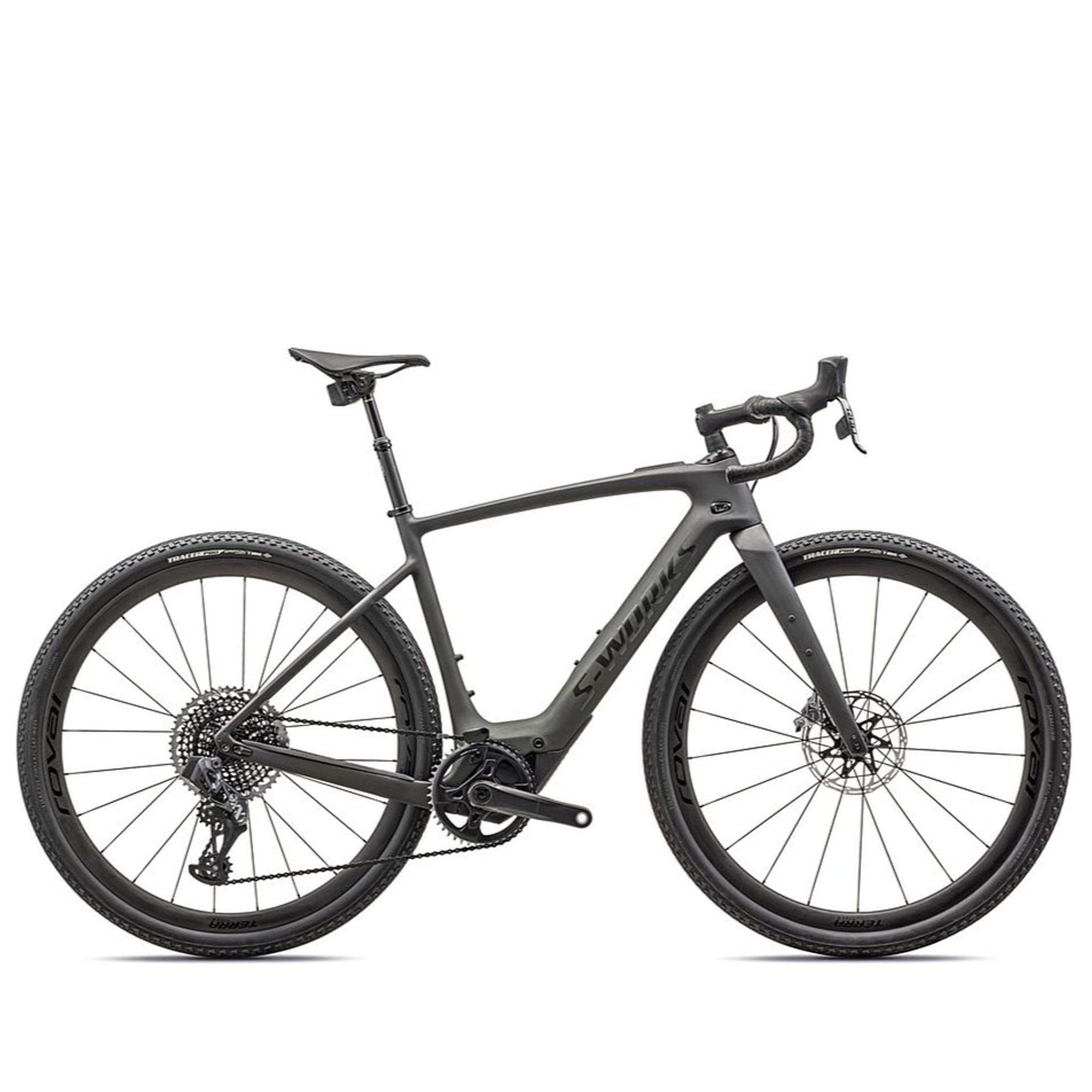
The Specialized Turbo Creo 2's chunky gravel tyres allow you to ride off-road as well as on.
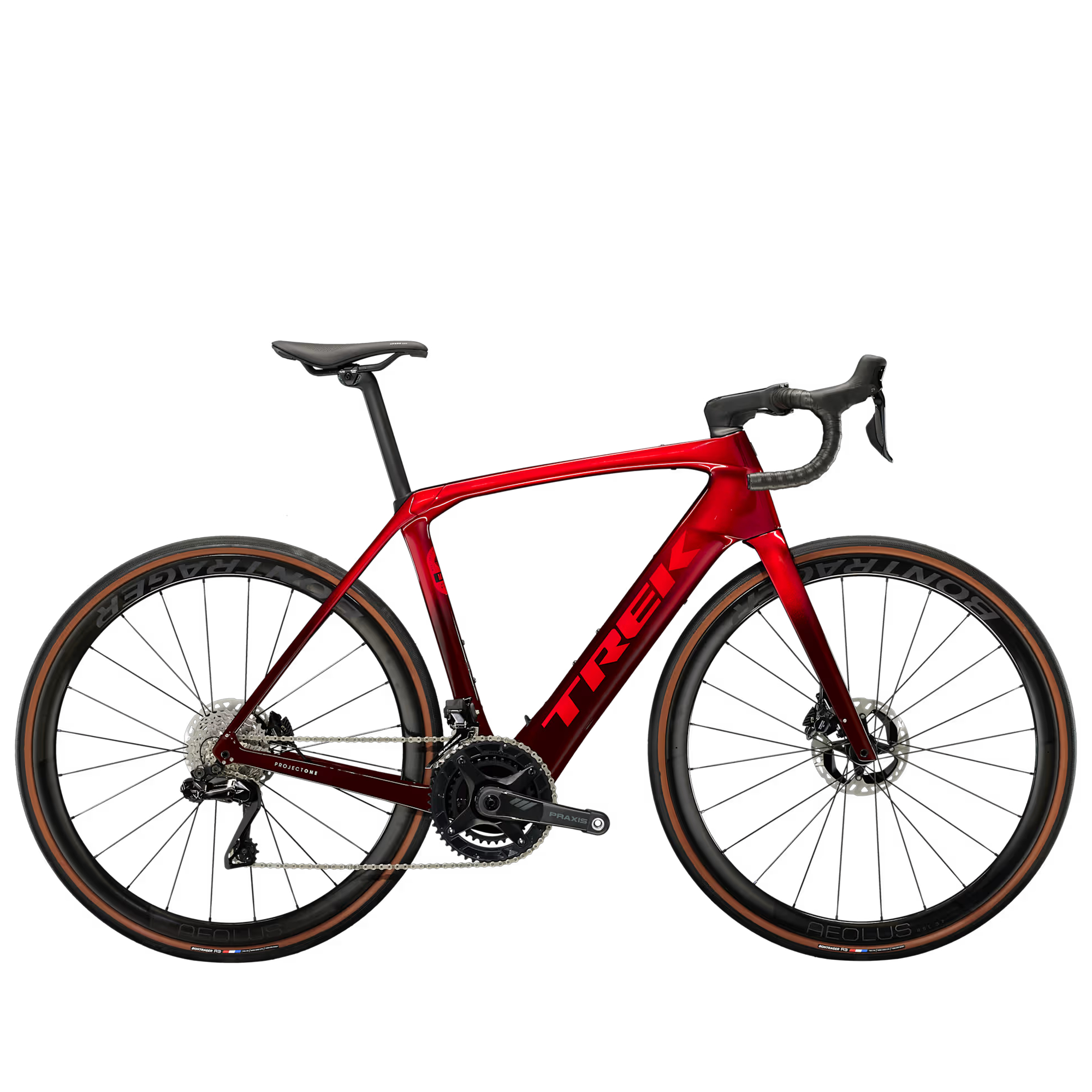
The Domane+ SLR is low in weight and, in the US, provides motor assistance up to 28mph.
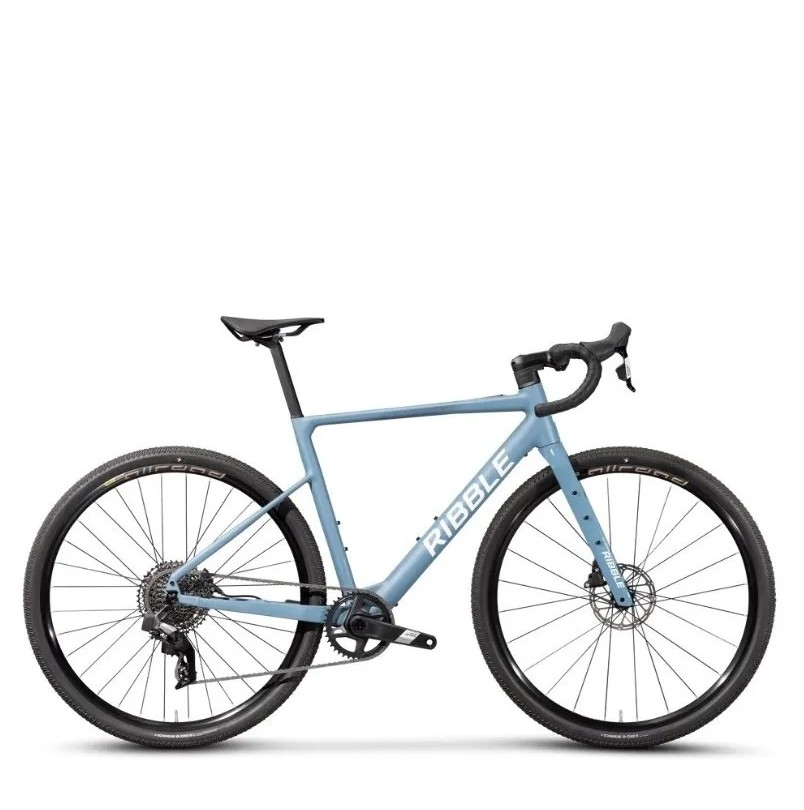
The Allgrit E AL offers a versatile, configurable spec to power your gravel adventures.
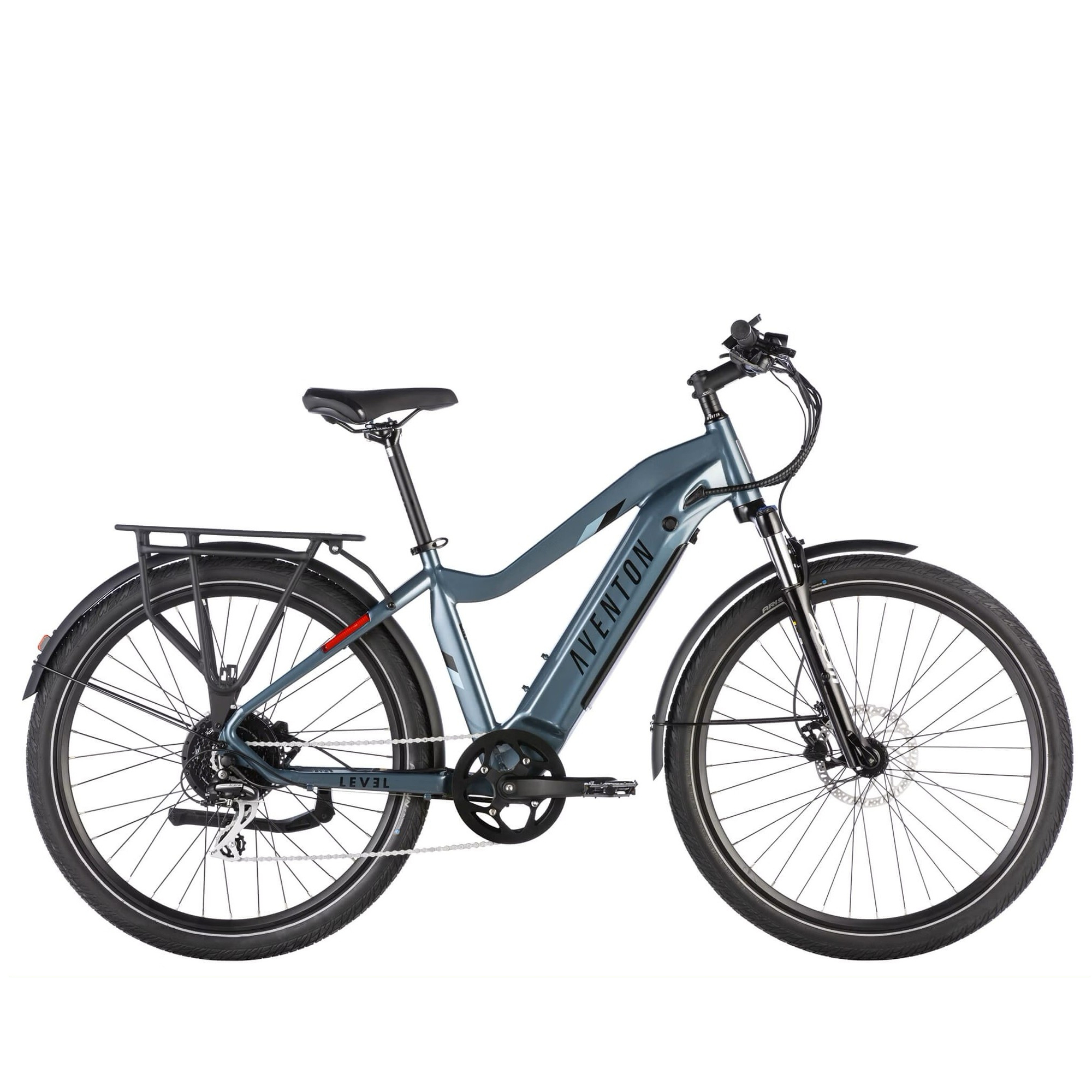
US riders get assistance up to 28mph with the Level 2, making it an affordable car replacement for commuting.
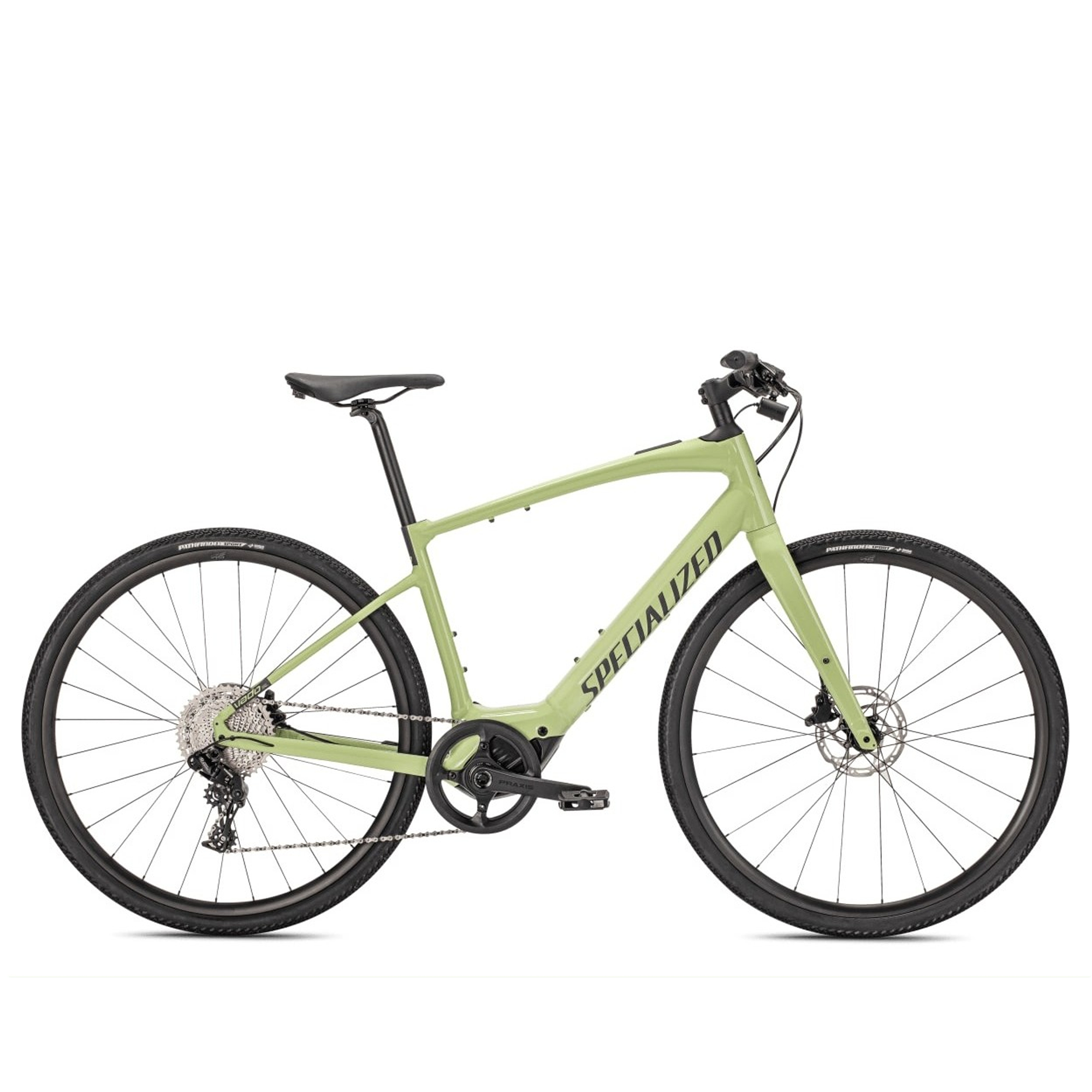
The Specialized Turbo Vado SL is a low-weight option for city riding with an integrated battery.
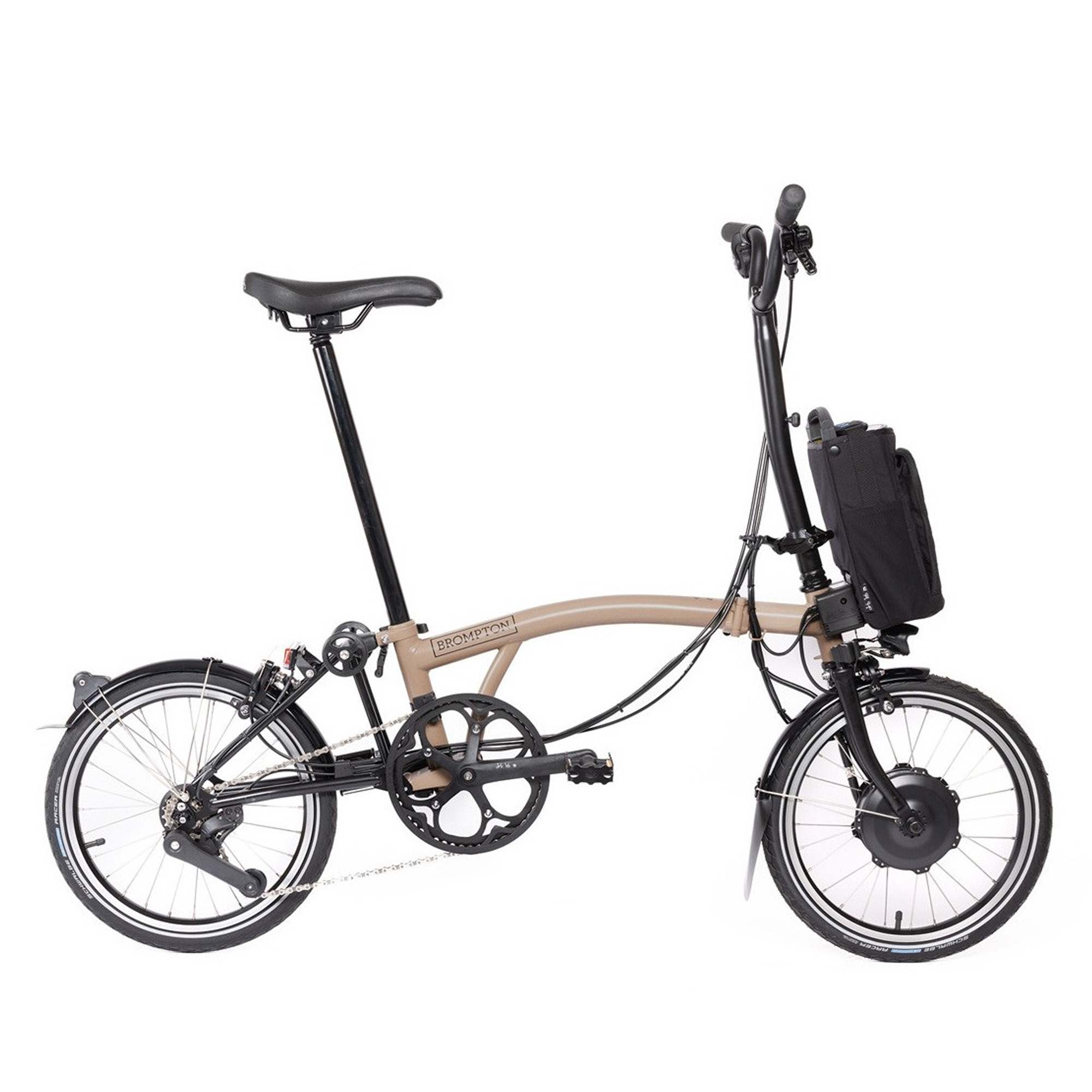
Brompton's neat folding mechanism makes for a compact package, with a separate battery pack.
Last updated on 14th July 2025
This guide was revised in July 2025, updating our choice of e-bikes and retiring bikes that are no longer available. The How to choose section and Faq section has also been updated.
Best electric bikes available today
You can trust Cyclingnews
Best electric road bikes
The best electric bikes are almost indistinguishable from pedal-powered bikes nowadays, utilising high-quality components and clever design to integrate battery packs. Various components and the best road bike tyres are now typically rated for electric bike use, meaning you still have the flexibility to upgrade your bike over time as you would any other bike.
The technology used in the best electric road bikes has significantly improved, meaning that the battery range - extremely important if you want to keep up on those Sunday club rides - has never been better. While still on the heavier side, the best lightweight electric bikes can now be as light as 12kg, and even the cheaper or more budget bikes hover at about 15-18kg, meaning there is little weight difference between some of the best road bikes and electric bikes.
For the best electric road bike, you’re perhaps going to want to consider manufacturer's reputation and post-purchase customer care to ensure that you get as much life out of your e-bike as possible, with quick turnarounds when things go wrong.
Our guide to the best electric road bikes has more options to help you figure out what you might need.
Best for on/off road use
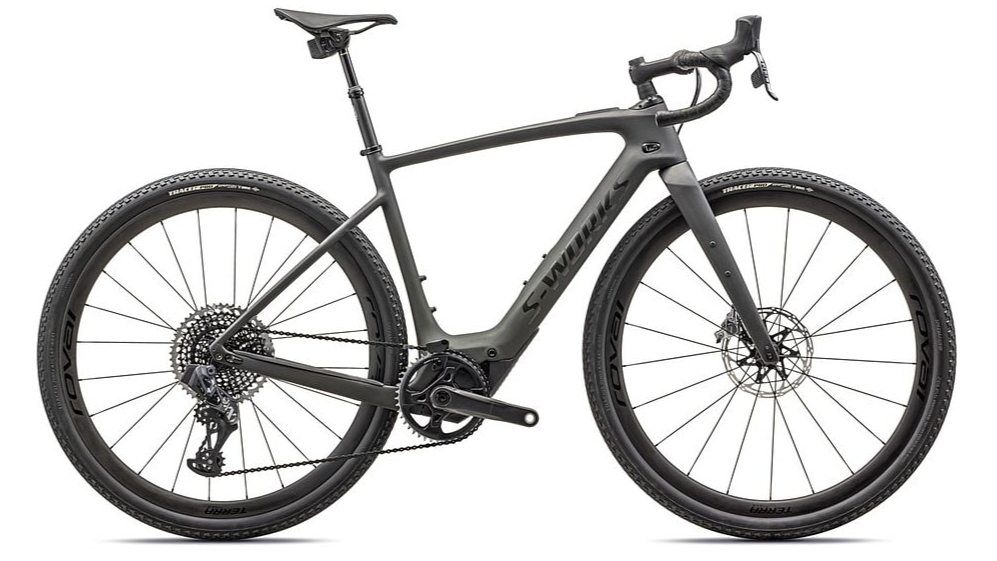
1. Specialized S-Works Turbo Creo 2
Specifications
Reasons to buy
Reasons to avoid
✅ You want on/off-road capability: Specialized fits gravel tyres, so you can take the Creo 2 off-road
✅ You want a smooth ride: The Future Shock fork adds suspension with little weight
❌ You want a road-tuned ride: The all-road capability means that the Creo 2 isn't tuned for road riders
The Specialized S-Works Turbo Creo 2 replaced the outgoing Turbo Creo last year. Thanks to the uprated SL1.2 drive system, it provides more power and torque, which can be fine-tuned via the Specialized app.
Specialized now fits the Creo 2 with gravel tyres, its argument being that with the e-power on tap, the gravel tyres let you ride on or off the road without worry. The Future Shock 3.0 headset adds extra comfort too.
When Tom rode the Turbo Creo, he found it fun both on road and off, with enough power for an engaging ride on road, while its reduced weight, more powerful motor and more relaxed geometry make it very capable off-road too.
Check out the Specialized S-Works Turbo Creo 2 first ride review if you want to read more.
Best fast road e-bike
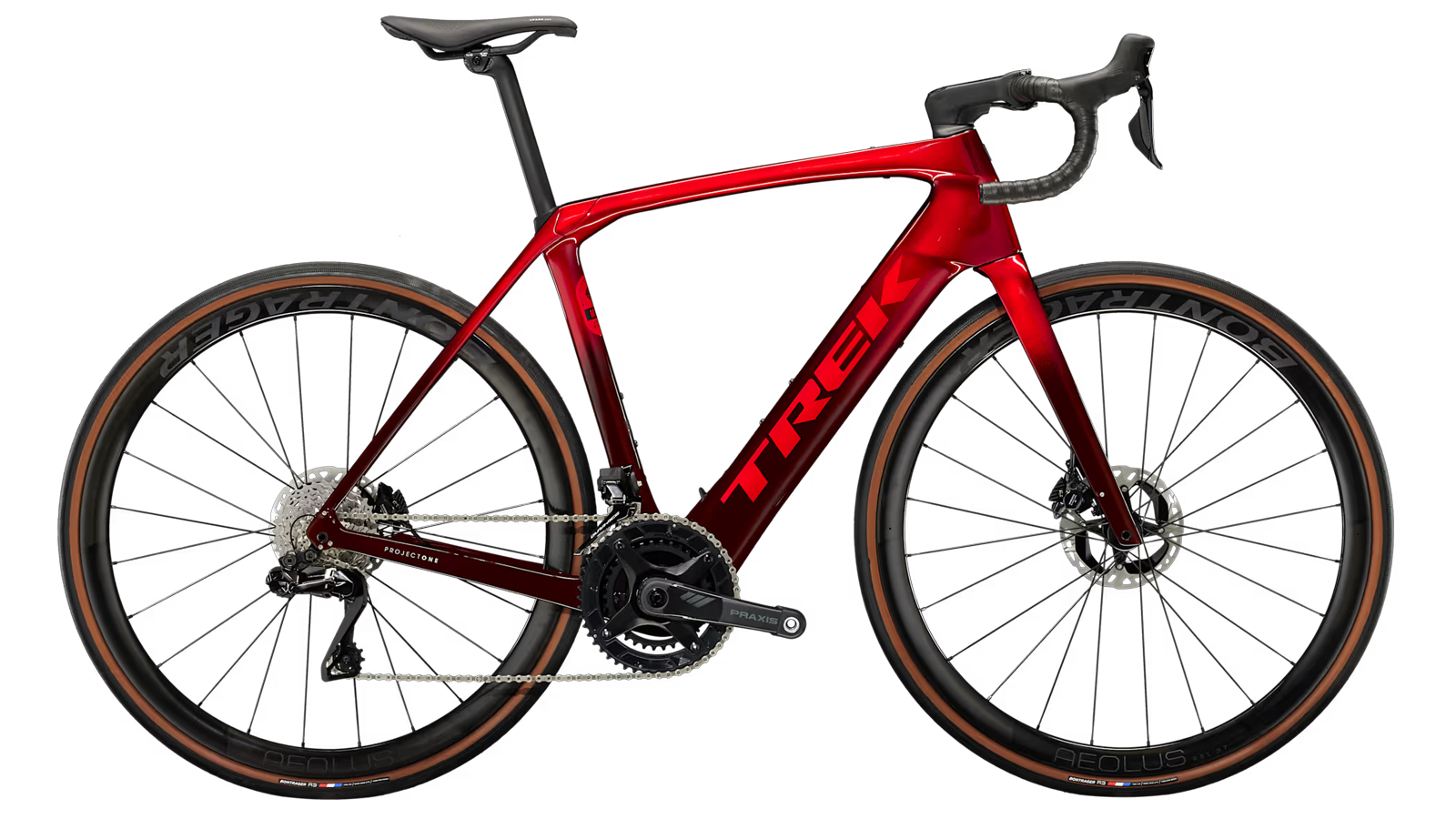
2. Trek Domane+ SLR 9
Specifications
Reasons to buy
Reasons to avoid
✅ You want a fast ride: US riders get assistance to 28mph
✅ You want a quiet motor: Trek claims industry-leading noise levels from the TQ motor
❌ You want off-bike charging: The Domane+ has a non-removable internal battery
Trek’s highest-value electric road bike, the Domane+ SLR 9 doesn’t look anything like an e-bike, instead prioritising the clean lines of a carbon road bike. Assistance level is chosen via two tiny buttons on the handlebar tops and the mid-mounted TQ motor is compact, lightweight and quiet.
Offering a 360Wh integrated battery for a solid 60 miles of range and with an optional range extender to extend that further, and equipped with Dura-Ace Di2, the Domane SLR has a big spec, and even has clearance for 40mm tyres for those wanting to swap out the roads for trails every so often.
There's plenty of power on tap, enough to power US riders up to 28mph, although in the rest of the world the Domane+ is speed-limited to 25km/h. The carbon Domane+ SLR is a pricey option, but Trek also sells the alloy Domane+ AL if you're looking for a more affordable Trek electric road bike.
Read our Trek Domane+ SLR launch story for more.
Best lightweight e-bike
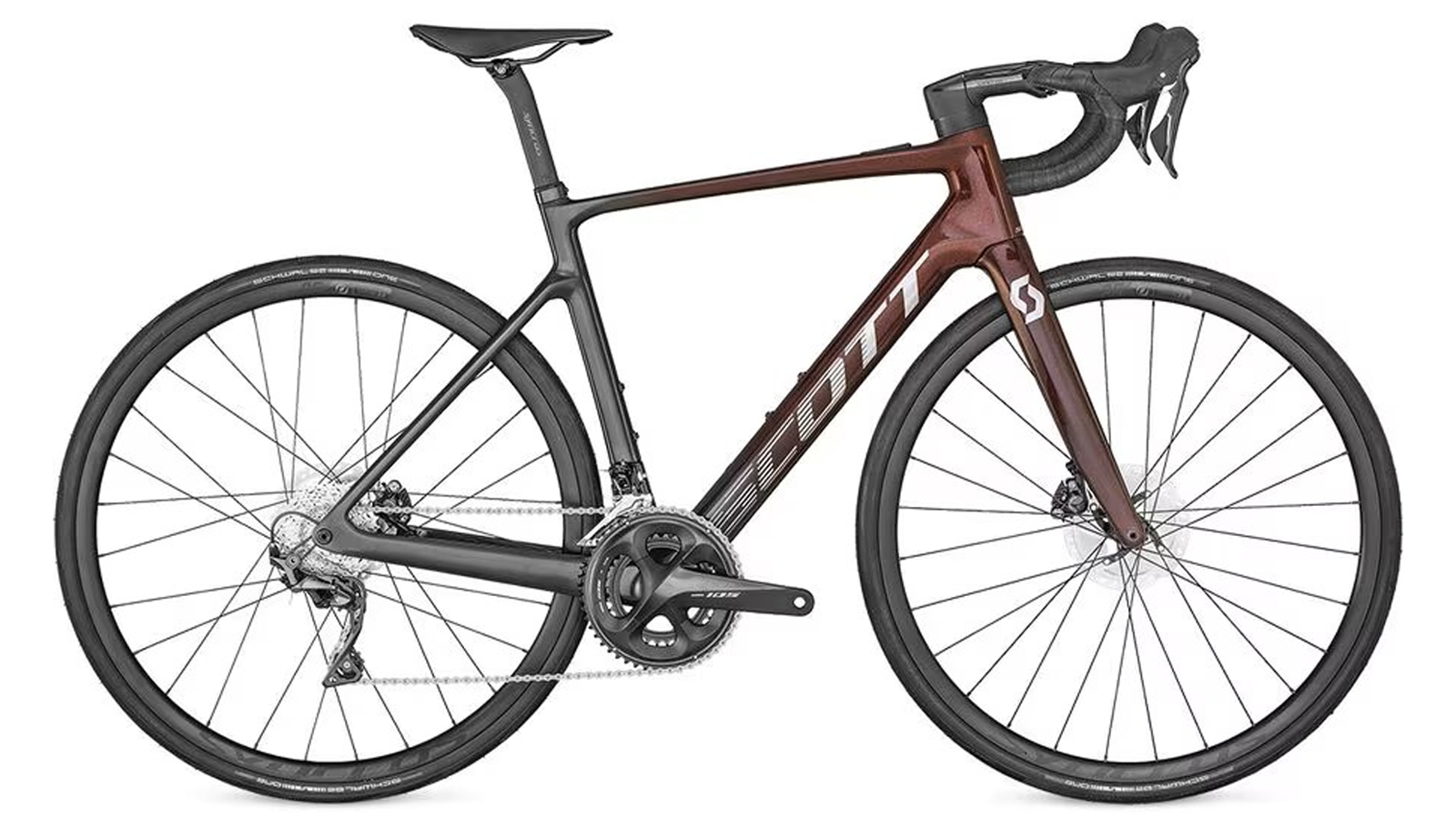
3. Scott Addict RC eRide
Specifications
Reasons to buy
Reasons to avoid
✅ You want low weight: The Addict eRide is one of the lightest e-bikes available
✅ You want an e-bike for women: There's a women's version available with women's sizing and touchpoints
❌ You want off-bike charging: The eRide is another e-bike with an internal battery
❌ You want longer range: You need to purchase a separate range extender to increase battery capacity
Available as a women's version, the Contessa Addict RC eRide as well as the men's bike, the top-spec Addict eRide Ultimate has a Shimano Dura-Ace groupset and Syncros carbon wheels, for a claimed weight of 10.7kg.
Assistance is provided by a Mahle X20 motor system, which has a compact, low-weight 55Nm rear hub motor and totally encloses the battery in the bike's down tube. Scott claims you can stretch the range to 145km by fitting the optional range extender battery.
The bike carries over many of the features of the (previous generation) non-electric Addict RC, including the one-piece bar/stem and carbon wheels for top specs. Even the lower spec Addict RC eRide 20 has electronic shifting and a claimed weight of just 11.7kg.
Read our Scott Addict eRide launch story for more details.
Best electric gravel bikes
Over the past few years, gravel riding has seen a boom in popularity like no other. There now seems a gravel version of everything - from bikes to bib shorts to bottles to bags. It is therefore unsurprising that bike manufacturers have leapt at the opportunity to develop high-quality electric bikes for those wanting to hit the trails. To be fair, having that little boost of electric pedal assist does not go amiss on some routes.
You’ll want to consider the right power output for your gravel bike - probably up to 500W with over 50Nm of torque on tap - making sure you have the added oomph to get up the loose, rocky climbs gravel riding is so famous for, and considering carefully the type of riding you want to do in terms of identifying the range you’ll need.
Mounting points for mudguards and bikepacking bags or racks allow you more versatility, alongside a frame with bigger tyre clearance. As with the best gravel bikes without electric assistance, you’ll want to think about your gearing, needing a wide range of gears with perhaps only a 1x, or at most 2x, drivetrain.
Despite gravel bikes generally having a more relaxed geometry than road bikes, there are still variations in the frame, so you might want to consider how much reach you would like or how upright you want your position to be before purchasing. Our guide to the best electric gravel bikes gives a much broader overview of rides.
Best affordable gravel e-bike
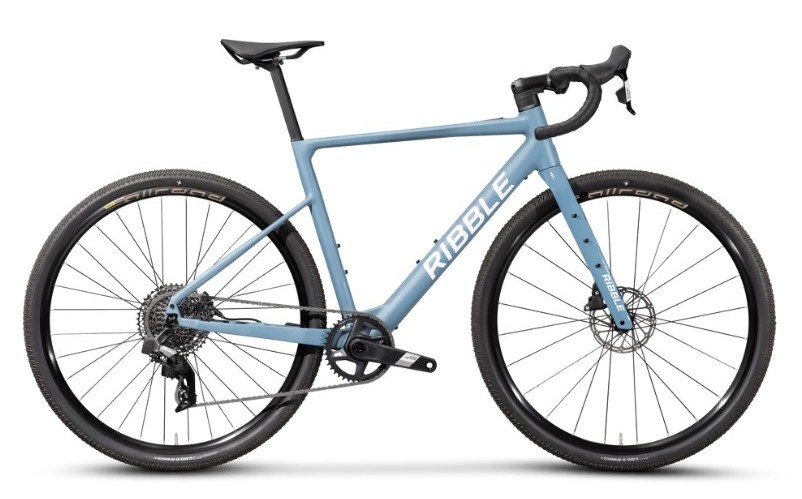
4. Ribble Allgrit E AL
Specifications
Reasons to buy
Reasons to avoid
✅ You want to choose your spec: Ribble's bike builder allows you to customise your component spec
✅ You want good range: The built-in battery's range is decent and you can add a range extender too
❌ You want lower weight: There's a carbon version that drops the claimed weight to 12.4kg or less
❌ You want an easier control unit: As with other Mahle units, the top tube control panel is hard to use
Launched in June 2025 and one of the most affordable electric gravel bikes on the market, we love how customisable the Allgrit is. It allows you to choose every component from drivetrain to wheels, tyres and touchpoints and even custom frame colours so you can build the exact bike you want.
The bike is powered by the ubiquitous Mahle rear hub motor system, with the battery fully enclosed in the alloy down tube, keeping it out of the way of the weather and dirt.
There are currently mechanical and electronic SRAM builds available, with the option to add a suspension fork for just £300. The 50mm tyre clearance allows you to fit tyres as wide as you like.
If you want something flashier and lighter, there's a carbon fibre option, the Allgrit E Carbon-X, with a higher torque Mahle motor.
You can read more about the Ribble Allgrit range in our launch story.
Best electric gravel bike
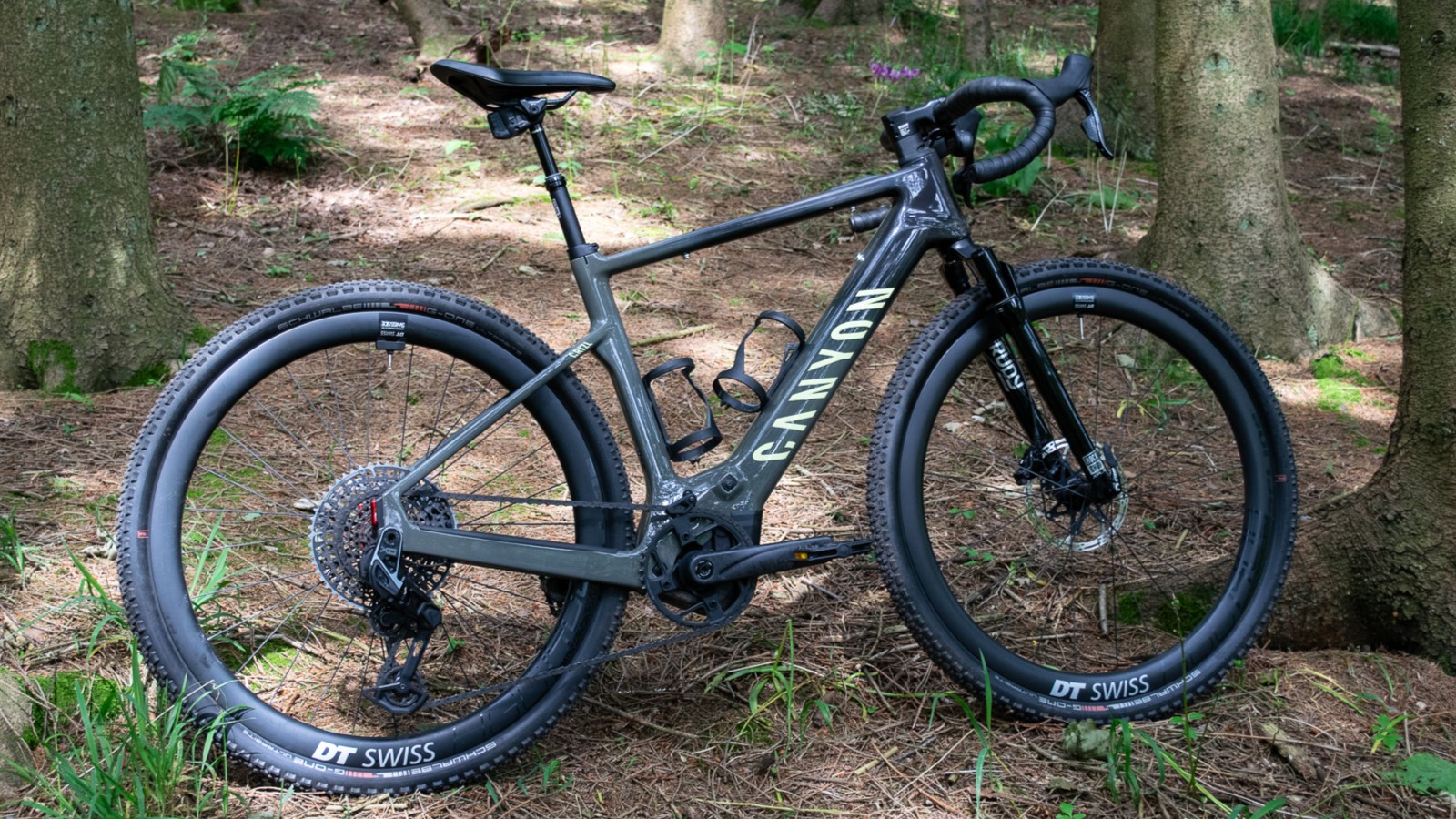
Specifications
Reasons to buy
Reasons to avoid
✅ You want capability: The Canyon is one of the most capable e-gravel bikes on rough tracks
✅ You want a smooth ride: A suspension fork and VCLS seatpost smooth bumpy surfaces
❌ You want lower weight: The Canyon is a little heavy for a performance e-bike
❌ You want to try before you buy: Canyon's direct sales model makes this more difficult
With room for 50mm tyres, a RockShox suspension fork and a compact Bosch Performance Line SX motor, the Canyon Grizl:ONfly e-gravel bike is anything but vanilla.
Based on the ever-successful Grizl pedal-powered carbon gravel bike, the geometry has been tweaked ever so slightly for a more slack, stable front end. Canyon quotes a range of around 100km for the Grizl:ONfly, but its optional range extender adds around 50% extra.
The Grizl:ONfly comes with lights as standard, with the rear ones neatly integrated into the seat stays and there are magnetic Fidlock mounts for a frame bag and optional mudguards.
Tom found the Grizl:ONfly brilliant fun to ride and with the power on tap for it to be capable enough to handle mountain bike trails. All specs have a dropper post with a lock-out and there was also a dropper post on his test bike to increase the all-terrain capability.
Read our full Canyon Grizl:ONfly review for more.
Best budget electric bikes
Lower-priced electric bikes will always mean making a bit of a trade-off between weight, battery life, build quality, components, and customer support, possibly compromising all of them to a greater or lesser extent, depending on your budget. In saying that, though, there are still a few gems to be had for a pocket-friendly price. Being clear on exactly what your non-negotiables are in an electric bike will help you narrow down your search and ensure you don’t end up with a weighty dud.
Our guide on how to buy an electric bike can help you get to grips with the important elements of an electric bike and offers ideas for selecting the best model and spec for you.
Budget electric bikes are almost invariably hybrids with flat bars, although some will include a suspension fork and may have some off-road potential rather than being solely designed for use on tarmac.
Best budget folder
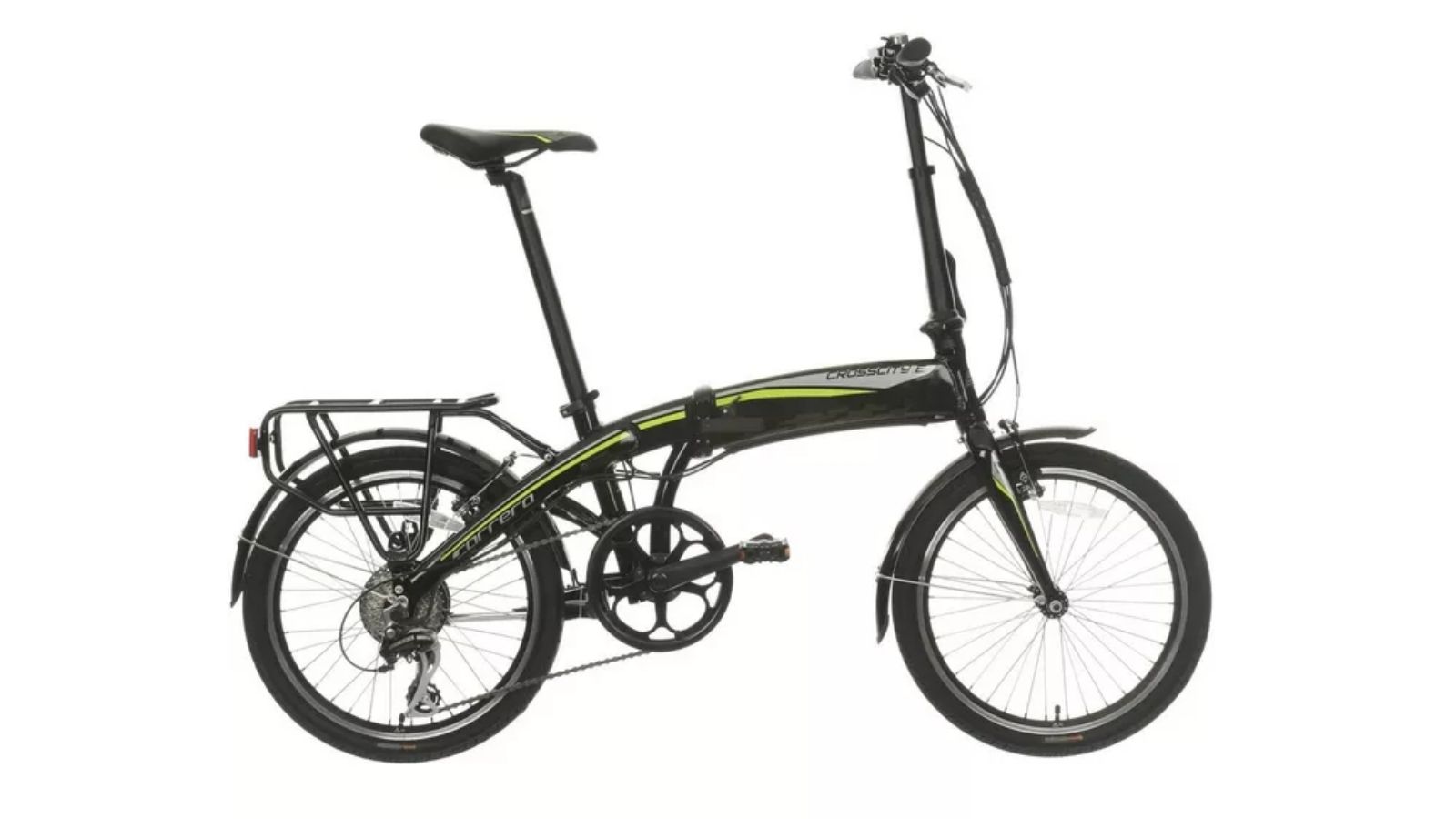
6. Carrera Crosscity folding bike
Specifications
Reasons to buy
Reasons to avoid
✅ You want an affordable folding e-bike: The Crosscity is an affordable folder
✅ You want a ride-ready e-bike: With a rack and mudguards, you're ready for your commute
❌ You want a lower weight: The Crosscity's 18kg makes it heavy to carry
❌ You want faster charging: At six hours to charge, you'll need to keep it plugged in regularly
If you’re looking for a budget folding e-bike, the Carrera Crosscity folding bike offers considerable value at a low price point. With 30 miles of range and a top speed of 25 km/h, you can still zip along the roads at a lick with enough range to get you to and from work easily.
The 313Wh battery is enclosed in the frame, while the motor is in the rear hub, making for a neat profile. A bar-mounted LED display allows you to choose between the three available assistance levels and the eight-speed gearing allows you to ride fast on the flat but also provides enough low gears for hills.
The Crosscity's main downside is that it takes about 6 hours to recharge, longer than most, although it does come with a 2-year warranty on the battery life.
It's also a little heavier than many of the best folding electric bikes and doesn't fold as compactly as some, making it a little awkward to carry around. But if you are looking at a folding bike principally for its easier storage, this may not be such an issue.
Best US budget e-bike
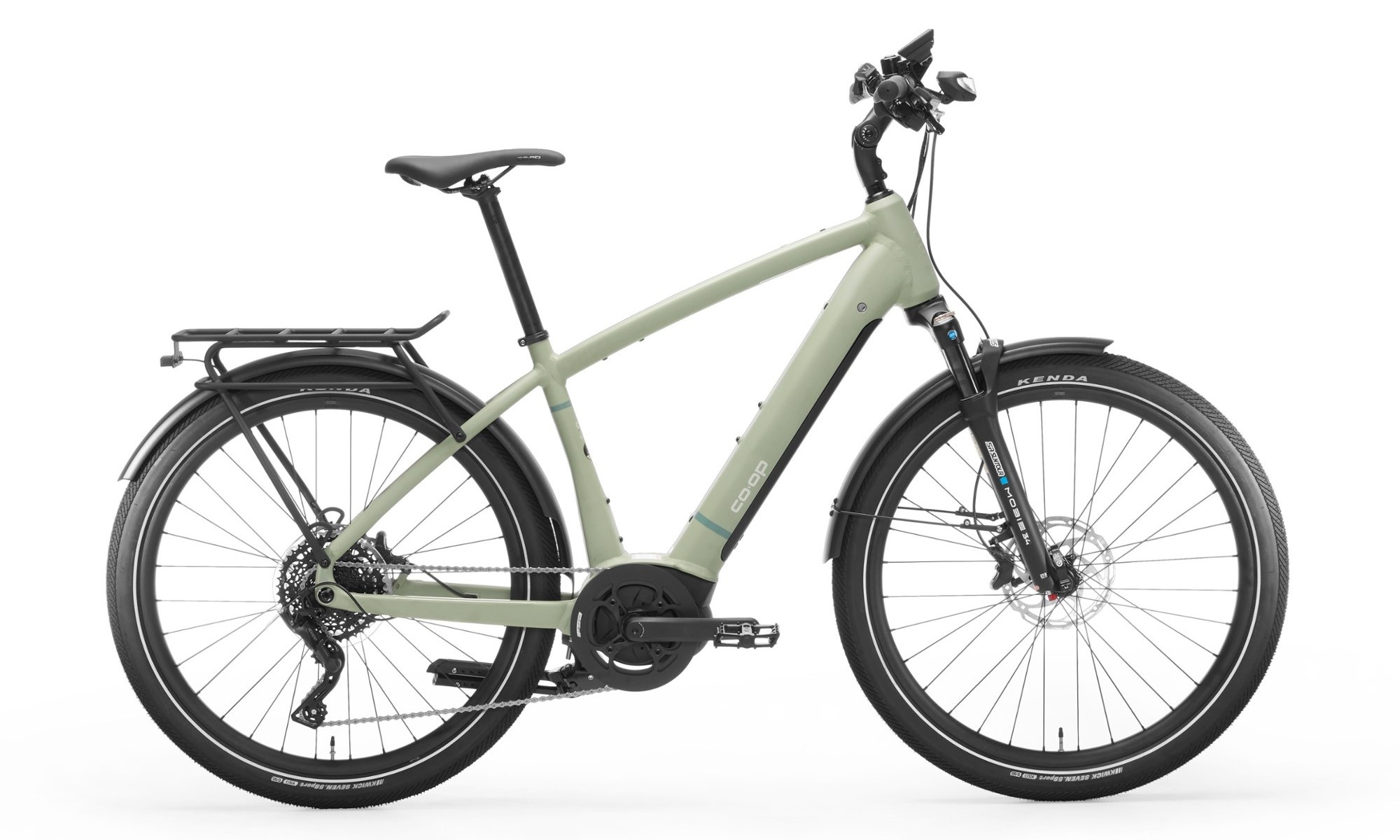
7. Co-op Cycles CTY e2.2 Electric Bike
Specifications
Reasons to buy
Reasons to avoid
✅ You want an affordable option: The CTY e2.2 is good value for the quality spec
✅ You want 28mph assistance charging: The Class 3 spec will get you along fast
❌ You want lower weight: The large motor and battery add weight
❌ You live outside the US: The bike is sold by REI in North America only
Manufactured by REI but sold under the Co-Op Cycles brand, the CTY e2.2 is one of the best-specced electric bikes for its price. It's a Class 3 bike with a throttle and powered by a quality Bosch mid-mounted motor and with MicroShift components in its nine wide-range gears.
The powerful motor allows it to reach 28mph, with a 60-mile claimed range, while the rack, fenders and suspension fork make the bike a versatile commuter or leisure ride. Four piston disc brakes from Tektro provide the stopping power to match the bike's speed and not insignificant 59lb weight.
Best US fast commuter
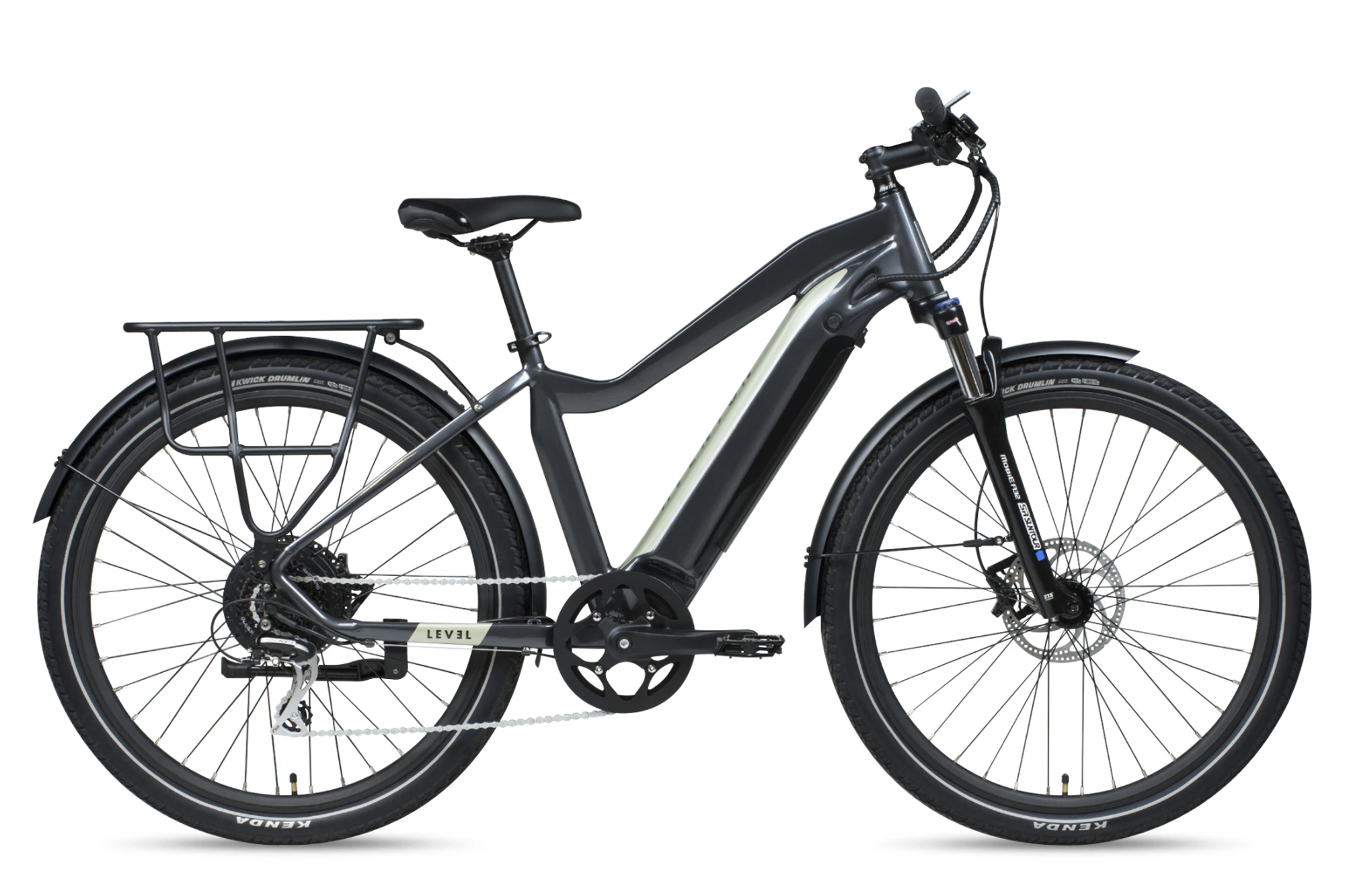
8. Aventon Level 2 Commuter
Specifications
Reasons to buy
Reasons to avoid
✅ You want a fast commute: The Level 2 is Class 3 rated, so you get assistance up to 28mph
✅ You want to try first: There's a reasonable spread of Aventon dealers in the US to be able to test ride
❌ You want more portability: The 28kg weight will make moving around off-bike a bit of a chore
❌ You want non-US availability: Aventon only sells in the US and Canada
The Aventon Level 2 is a versatile, reasonably priced bike with both top tube and step-through frame options. As a Class III bike, it's comfortable in traffic with a max speed of 28mph and includes a throttle for extra power. Quality alloy fenders and a lifetime frame guarantee confirm durability.
With approximately 60 miles on one charge, it is perfect for reliable city riding, and then some. Aventon also offers a try-before-you-buy through its dealer network, which we would recommend making use of!
Get great deals on high-performance electric bikes and accessories for your next ride with our Aventon discount codes.
Best electric commuter bikes
Getting an electric bike for commuting will almost certainly be one of the best decisions you make, making it much easier to ditch the car and skip the morning traffic.
There are a number of considerations when it comes to deciding on the best electric bikes for commuting, including ensuring the weight is low enough if you have to lift it onto a train or upstairs, the battery range to help you get to and from work, how quickly your e-bike charges and even your cycling position. For some, a traditional sit-up-and-beg style feels more comfortable in traffic, while for others, a more typical dropped handlebar set-up helps them feel happiest on the early morning roads. If space is going to be a problem at work, home or on the train, one of the best folding electric bikes might be a better investment, with many brands managing to balance weight and battery for a much more practical ride.
You might also want to think about whether you need the best road bike mudguards, lights and racks, or even the capability to fold for better storage options. Remember that for UK riders, your electric bike will almost certainly be covered under the Cycle To Work scheme, so it is worth considering that as a way of financing a higher-spec electric bike.
Finally, if you’re contemplating getting an electric bike for commuting, you’re also going to want to think carefully about using one of the best e-bike locks to secure your new ride.
Best low weight commuter
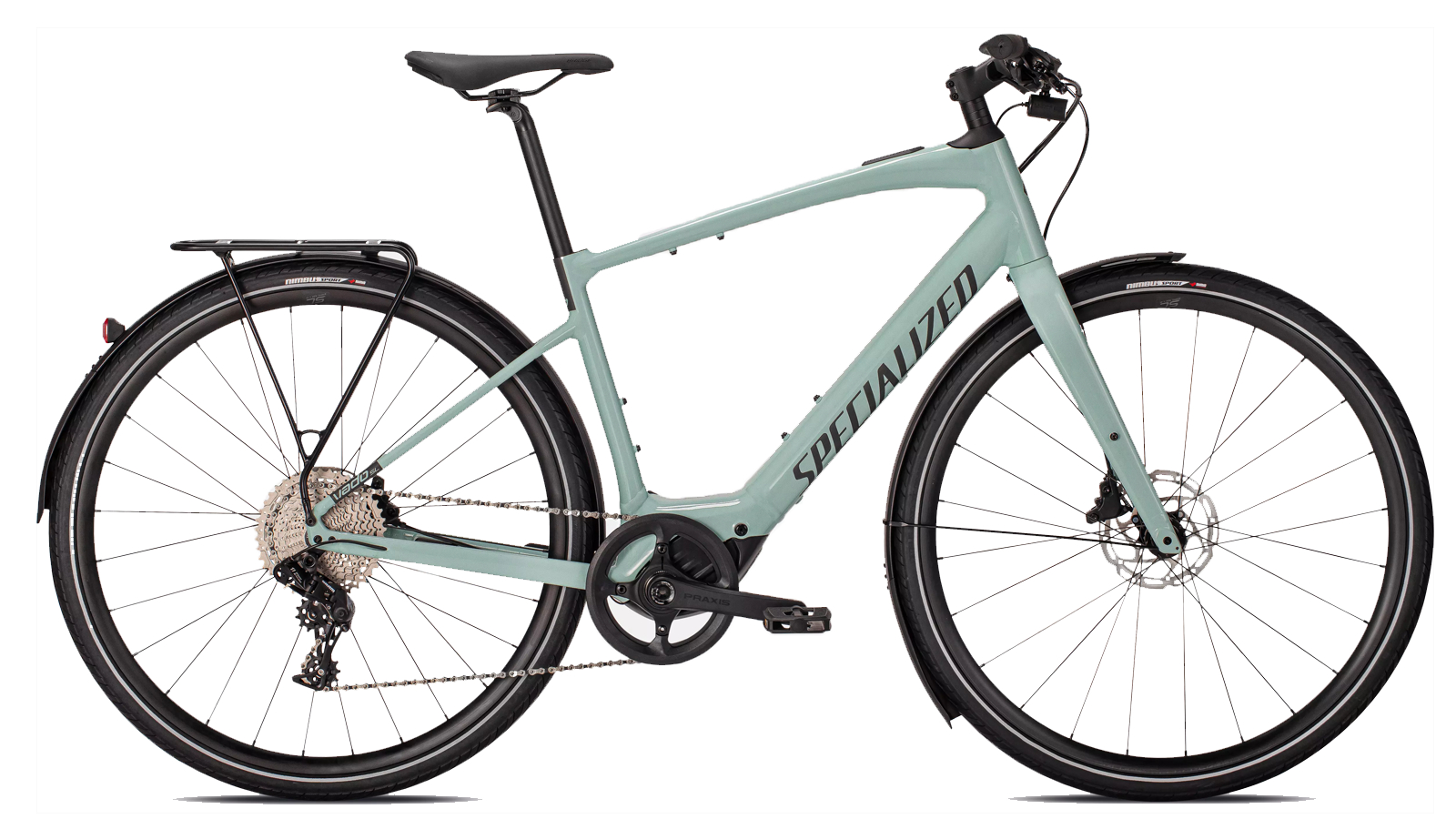
9. Specialized Turbo Vado SL
Specifications
Reasons to buy
Reasons to avoid
✅ You want low weight: The 15kg weight is among the lightest for a hybrid e-bike
✅ You want a good range: The 90-mile range is impressive
❌ You want a lower price: Specialized's e-bike is pricey
❌ You want more assistance: If you live somewhere hilly, you may crave greater torque to make riding easier
The Specialized Turbo Vado SL is a powerful and lightweight electric bike, an exceptionally good option for urban riders who want an impressive battery range and a well-specced bike. With up to 90 miles on one charge and an 11-speed 11-42 cassette, it can best any city climb. Rolling on 700c wheels, the 38mm Specialized Pathfinder Sport tyres will take the sting out of potholes while Tektro hydraulic disc brakes will stop sharply.
We were impressed by the refined power delivery and agile handling, which allowed us to weave through congested urban streets. This was enhanced by the low weight and helped by the Future Shock 1.5 front suspension, which offers a minimalist solution to increase comfort, although we reckoned that the system's performance didn't justify the extra weight, cost and complexity. Some specs omit Future Shock though.
If you want more support, the standard Turbo Vado has a more powerful motor and larger battery, but at the expense of a weight increase to around 37kg / 60lb.
Read our Specialized Turbo Vado SL review for more details.
Most versatile commuter
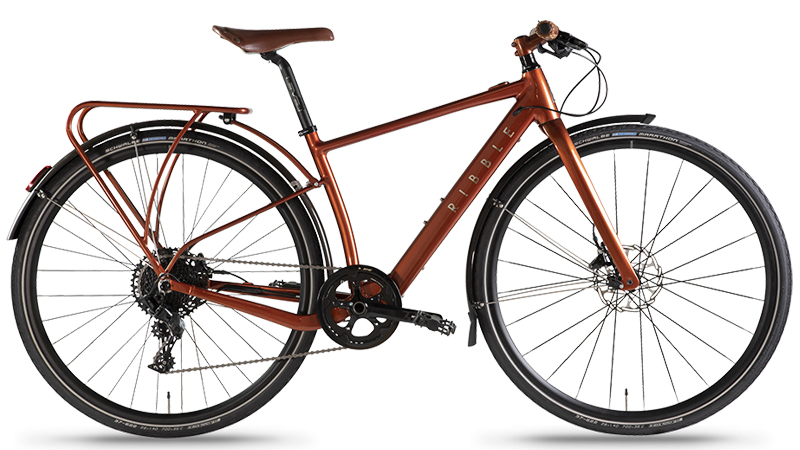
10. Ribble Hybrid AL e
Specifications
Reasons to buy
Reasons to avoid
✅ You want a clean-looking e-bike: The Ribble's internal battery and hub motor look neat
✅ You want a full feature set: Mudguards, rack and lights set the bike up for all-weather commutes
❌ You want off-bike charging: The internal battery means that you need a power outlet near the bike
❌ You want US availability: Ribble is based in the UK and its bikes are more difficult to source in the US
The Ribble Hybrid AL e looks neat, thanks to an internal battery and rear hub motor. There's a step-through frame available as well as the crossbar version. In Fully Loaded form, it also includes mudguards and a rear rack, although more stripped-down specs are available and you can customise your bike using Ribble's bike builder app.
There's also a Trail version available if you want more off-road capability, but the road-going spec makes a compelling case as a versatile commuter or fun weekend ride.
When we rode the (non-assisted) Hybrid AL Trail, we appreciated the comfort on gravel and the well-balanced ride position. We reckoned the bike lacked pace though - something the added motor should help to address.
Best folding e-bike
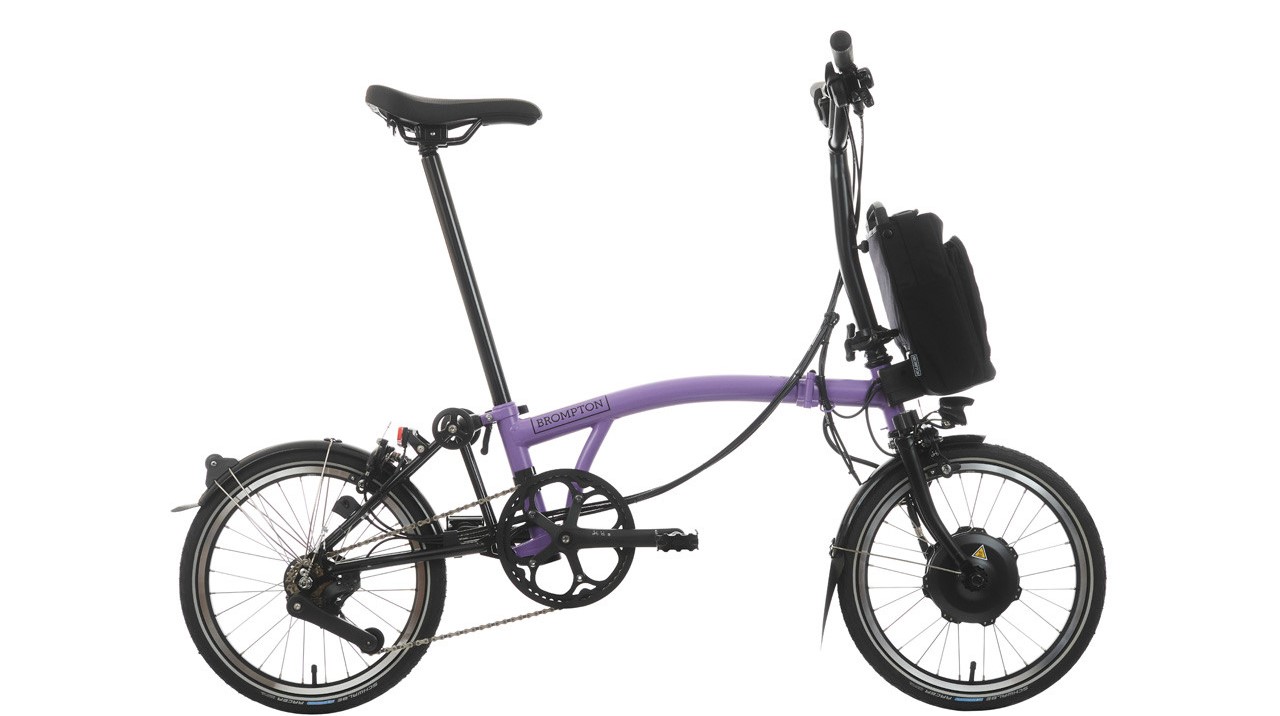
11. Brompton Electric C Line
Specifications
Reasons to buy
Reasons to avoid
✅ You want a fast, compact fold: Brompton is renowned for its clever folding mechanism
✅ You want a separate battery pack: The backpack battery makes carrying easier
❌ You want faster charging: The four-hour charge time is a little slow
❌ You want better handling: We found that the battery and motor at the front affected the Brompton electric's handling
The Brompton Electric is the grandaddy of folding electric bikes, using a 250-watt front hub-based motor and a handlebar-mounted 300Wh removable battery pack to get you enough juice for between 30km and 70km, and taking only four hours to recharge.
The bike only weighs 17.4kg too, which is on par with some non-pedal assist folders, with only seconds needed to fold down into a storage-friendly size. There's a huge range of luggage and accessory options tailor-made for the bike, so you can set it up for commuting, shopping or even longer trips away.
If you do want to pare some weight off your e-bike, Brompton has expanded its electric bike range with the lighter-weight Electric P Line, while the 20-inch wheel Electric G Line offers a wider-tired, more versatile option that can take in some off-tarmac riding.
For more details, read our Brompton Electric review.
How to choose the best electric bike for you
As you'll see from our picks above, there are many different types of electric bikes and a whole range of prices from the inexpensive to the very pricy, so there are a range of questions to consider when looking for the best electric bike for your needs, that will help to narrow down your search. We'll go through them.
What kind of riding do I want to use my e-bike for?
The first thing to narrow down is the type of riding you expect to do on your electric bike. Are you predominantly riding it on road? Is that for recreation or commuting? Do you want a bike with drop bars or flat bars?
That's going to dictate whether you need an electric road bike or an electric hybrid bike.
If you're more interested in riding off-road, the same questions apply and will decide if you'll be better off with an electric gravel bike or an electric mountain bike. E-MTBs tend to have burlier tyres and suspension too, so they're more competent on more technical terrain. To muddy the waters, many electric hybrid bikes have wheels and tyres that make them suitable for gentler off-road use as well as on tarmac.
How much do I want to pay?
You can find electric bikes under $1,000 / £1,000, while premium electric bikes can cost ten times that amount. So setting your budget is a key step in narrowing down your choice of electric bikes.
As with non-electric bikes, many electric bikes are offered at a range of spec levels. You may be able to buy a variant of that $10,000 electric bike with less premium components for under half the price, while some e-bikes are made with alloy frames as well as carbon, which will again be more affordable.
How will I use and store my electric bike?
How far are you going to want to ride your e-bike? If you're just using it for commuting, the distance might be lower than if you're planning on recreational use. Sometimes a lower-priced electric bike will have a lower capacity battery with a more limited range, so it's worth considering if the claimed range will meet your needs.
In general, electric bikes are quite heavy, so if you're going to have to carry your e-bike upstairs or onto public transport, it's worth looking for a lighter-weight model. Public transport options for non-folding bikes may be limited to specific hours when it's less crowded, so you might want to consider a folding electric bike.
Do you have electric power where you're going to store your e-bike? If not, you'll need to be able to remove your battery easily and take it somewhere to charge it. Conversely, you don't want it to be too easy to remove your battery if you're going to leave your e-bike in a public place. Batteries are pricy to replace if they're stolen and many e-bikes have locks on their removable batteries.
Frequently asked questions
Next we'll answer some of the main questions people have about electric bikes.
What are the regulations regarding e-bikes?
Regardless of whether your electric bike has a Shimano, Bosch, Fazua, or any other drive system, its output will be limited to comply with regional laws and restrictions. This will affect the maximum wattage, pedal-assist speed, and the need for licensing and insurance.
These vary depending on where in the world you reside and ride your e-bike, so here are the key things you need to know about regional restrictions in the UK, the US and Australia:
UK
In the UK, e-bikes are classed as regular non-pedal assist bikes provided the motor cuts out a 25kph, does not generate more than 250 watts of continuous assistance (although peak output can be greater), and does not kick in until the bike is already in motion. Riders must also be at least 14 years old. If your e-bike meets these criteria, you can legally ride it anywhere a bike can be ridden.
If your e-bike doesn’t meet these standards, it will need to be registered and insured as a motor vehicle, and you will need a licence and a helmet.
Australia
Australians love simplicity and that is why e-bikes are split into throttle operated and non-throttle operated. Throttle-operated e-bikes must be limited to 200 watts and 25kph, while pedal assist can provide up to 250 watts of assistance but is limited to the same speed limit. In keeping with this simplicity, anything that doesn’t abide by the above is considered a motorbike by law and must be licensed and insured.
USA
The US is one of the more difficult countries to navigate e-bike regulations because the rules will vary depending on what state you live in, and even then, the laws are written in legalese that just about requires a member of your local bar association to translate.
According to federal legislation enacted by Congress in 2002, an e-bike is defined as, “A two- or three-wheeled vehicle with fully operable pedals and an electric motor of less than 750 watts (1 h.p.), whose maximum speed on a paved level surface, when powered solely by such a motor while ridden by an operator who weighs 170 pounds, is less than 20 mph.”
Unfortunately, state laws surrounding e-bikes often supersede this legislation. Currently, 33 states have statutes that define an e-bike in some manner, while the rest lack a specific definition and may lump them in with another vehicle class. To make things even more confusing, in states like Mississippi there is no mention of e-bikes in the wording of the laws, but a general opinion issued by the Attorney General says an electric bicycle should be classified as a regular bike. Thirteen states have taken up the three-tiered system outlined by The Bicycle Product Suppliers Association which classifies electric bikes based on their maximum assisted speed:
- Class 1: the motor provides assistance only when the rider is pedalling and cuts out a 20mph
- Class 2: the motor can contribute regardless of pedalling but is governed to 20mph
- Class 3: the motor provides assistance when the rider is pedalling but cuts out at 28mph and must be equipped with a speedometer.
Regardless of class, the motor can only generate a maximum of 750 watts, and the class must be labelled clearly.
In the 17 states that lump e-bikes in with other classes of vehicles, licensing and registration may be required to operate an e-bike.
If your head is spinning trying to keep these rules straight, our friends over at People for Bikes have a handy state-by-state guide.
Which e-bike motor and battery do I need?
The best e-bike motors can be located in several areas of the bike, depending on which brand and model you opt for. Options are a front-drive, mid-drive or rear-drive motor system, located in the front hub, bottom bracket and rear hub respectively.
While any of the three options will serve you fine, the motor system location will often have an impact on the handling of your bike, so it's worth considering whether or not you would have a preference.
Generally, a mid-drive motor system is the best of the three, as it spreads the weight more evenly throughout the bike. Since the motor and battery are the heaviest parts, it's better to have that heft closer to the ground and between the wheels, so as not to throw off your centre of gravity. A rear hub motor is generally preferable to a front hub motor too, as you'll be sitting over it to give it traction and it's unlikely to affect steering.
Battery capacity is measured in Wh (watt-hours). The larger the number, the further your battery will take you on a single charge, and the heavier it will be. Some motor systems let you purchase a separate range extender battery which is often mounted to the bike in place of a water bottle. It plugs into the main battery, increasing range and, in some cases doubling it.
What's torque and how much do I need?
With most electric bike motors being limited to 250 watts continuous power output, it's their torque figures that are more significant in comparing electric bikes. That's a measure of how much push the motor will give you as you ride.
In general, electric bikes start at around 40Nm torque. That's enough to give you a light push and help you up hills, but you'll need to put in quite a bit of your own effort. Electric bikes with this range of torque also tend to have smaller batteries, because they're not providing as much assistance, so they'll usually be lighter than an electric bike with a more torquey motor.
Many city hybrid electric bikes have a motor with around 60Nm torque output. That gives you more help with starts and when carrying loads, but results in a heavier bike and needs a larger battery.
The highest torque electric motors can provide around 100Nm and are usually reserved for electric mountain bikes and some electric gravel bikes, where you need the turning power to keep you moving up steep gradients. They're also found on electric cargo bikes and some electric city bikes, where the extra torque helps with stops and starts when loaded. These motors are usually paired with even larger batteries and add even more weight.
How we test the best electric bikes
When we review an electric bike, we'll ride it over several months to understand how easy it is to live with, what its capabilities and limitations are and everything that makes it one of the best electric bikes, before we recommend it to readers like you.
We'll keep a detailed score sheet for each bike across a number of factors and offer you a balanced appraisal, as documented in more detail in our guide to how we test.
The latest race content, interviews, features, reviews and expert buying guides, direct to your inbox!
Mildred joined as Reviews Writer for Cyclingnews and BikePerfect in December 2020. She loves all forms of cycling from long-distance audax to daily errand-running by bike, and does almost everything on two wheels, including moving house, and started out her cycling career working in a bike shop. For the past five years she's volunteered at The Bristol Bike Project as a mechanic and session coordinator, and now sits on its board of directors.
Since then she's gone on to write for a multitude of cycling publications, including Bikeradar, Cycling Plus, Singletrack, Red Bull, Cycling UK and Total Women's Cycling. She's dedicated to providing more coverage of women's specific cycling tech, elevating under-represented voices in the sport, and making cycling more accessible overall.
Height: 156cm (5'2")
Weight: 75kg
Rides: Stayer Groadinger UG, Triban RC520 Women's Disc, Genesis Flyer, Marin Larkspur, Cotic BFe 26, Clandestine custom bike
